Cisco Access Point AIR AP1231G A K9 (AIR-AP1231G-A-K9):: Detalle de Producto :: EL Cisco Aironet Serie 1200 IEEE 801.11a/b/g tiene el estandar
para grandes empresas, alta performance, seguro, administrable y flexible para
LANs inalambricas (WLANs) . SOportar simple o dual configuracion de radio hasta
54 Mbps en bandas de 2.4 y 5 Ghz.
Características
- Part Number AIR-AP1231G-x-K9 Cisco IOS
Software - AIR-LAP1231G-x-K9 Cisco Unified Wireless
Network Software - NOTE: The Cisco Aironet 1200 Series may
be ordered with Cisco IOS Software to operate as an autonomous AP or with
Cisco Unified Wireless Network Software using LWAPP. When the 1200 Series
is operating as a lightweight AP a WLAN controller is required. - Regulatory Domains: (x=Regulatory Domain)
- • A=FCC
- • E=ETSI
- • I=Israel
- • J=TELEC (Japan)
- Customers are responsible for verifying
approval for use in their individual countries. To verify approval and to
identify the regulatory domain that corresponds to a particular country
please visit . - • Not all regulatory domains have been
approved. As they are approved, the part numbers will be available on the
Global Price List. - Software
- • Cisco IOS Software Release 12.3(8)JA
or later (autonomous). - • Cisco IOS Software Release 12.3(11)JX
or later (Lightweight Mode). - • Cisco Unified Wireless Network Software
Release 4.0 or later. - Security
- Authentication
- Security Standards
- • WPA
- • WPA2 (802.11i)
- • Cisco TKIP
- • Cisco message integrity check (MIC)
- • IEEE 802.11 WEP keys of 40 bits and
128 bits - 802.1X EAP types:
- • EAP-Flexible Authentication via Secure
Tunneling (EAP-FAST) - • Protected EAP-Generic Token Card (PEAP-GTC)
- • PEAP-Microsoft Challenge Authentication
Protocol Version 2 (PEAP-MSCHAP) - • EAP-Transport Layer Security (EAP-TLS)
- • EAP-Tunneled TLS (EAP-TTLS)
- • EAP-Subscriber Identity Module (EAP-SIM)
- • Cisco LEAP
- Encryption
- • AES-CCMP encryption (WPA2)
- • TKIP (WPA)
- • Cisco TKIP
- • WPA TKIP
- • IEEE 802.11 WEP keys of 40 bits and
128 bits - Data Rates Supported
- 802.11g: 1, 2, 5.5, 6, 9, 11, 12,
18, 24, 36, 48, and 54 Mbps - Network Standard
- IEEE 802.11b and IEEE 802.11g
- Uplink
- Autosensing 802.3 10/100BASE-T Ethernet
- Radio Module Form Factor
- 802.11a: CardBus (32-bit)
- 802.11b or 802.11g: Mini-PCI (32-bit)
- Frequency Band and Operating Channels
- Americas (FCC)
- 2.412 to 2.462 GHz; 11 channels
- ETSI
- 2.412 to 2.472 GHz; 13 channels
- Israel
- 2.432 to 2.472 GHz; 9 channels
- Japan (TELEC)
- • 2.412 to 2.472 GHz; 13 channels Orthogonal
Frequency Division Multiplexing (OFDM) - • 2.412 to 2.484 GHz; 14 channels Complementary
Code Keying (CCK) - Nonoverlapping Channels
- 802.11g: 3
- Wireless Modulation
- 802.11g: Direct sequence spread
spectrum (DSSS); OFDM - Receive Sensitivity (Typical)
- 802.11a:
- • 6 Mbps: -87 dBm
- • 9 Mbps: -87 dBm
- • 12 Mbps: -85 dBm
- • 18 Mbps: -84 dBm
- • 24 Mbps: -81 dBm
- • 36 Mbps: -78 dBm
- • 48 Mbps: -73 dBm
- • 54 Mbps: -72 dBm 802.11b:
- • 1 Mbps: -94 dBm
- • 2 Mbps: -91 dBm
- • 5.5 Mbps: -89 dBm
- • 11 Mbps: -85 dBm
- 802.11g:
- • 6 Mbps: -90 dBm
- • 9 Mbps: -84 dBm
- • 12 Mbps: -82 dBm
- • 18 Mbps: -80 dBm
- • 24 Mbps: -77 dBm
- • 36 Mbps: -73 dBm
- • 48 Mbps: -72 dBm
- • 54 Mbps: -72 dBm
- Available Transmit Power Settings
- (Maximum power setting will vary by channel
and according to individual country regulations) - 802.11a:
- OFDM:
- • 17 dBm (50 mW)
- • 15 dBm (30 mW)
- • 14 dBm (25 mW)
- • 11 dBm (12 mW)
- • 8 dBm (6 mW)
- • 5 dBm (3 mW)
- • 2 dBm (2 mW)
- • -1 dBm (1 mW) 802.11b
- CCK:
- • 100 mW (20 dBm)
- • 50 mW (17 dBm)
- • 30 mW (15 dBm)
- • 20 mW (13 dBm)
- • 10 mW (10 dBm)
- • 5 mW (7 dBm)
- • 1 mW (0 dBm) 802.11g:
- OFDM:
- • 30 mW (15 dBm)
- • 20 mW (13 dBm)
- • 10 mW (10 dBm)
- • 5 mW (7 dBm)
- • 1 mW (-1 dBm)
- Range
- 802.11g: Outdoor
- • 110 ft (34m) @ 54 Mbps
- • 200 ft (61 m)@ 48 Mbps
- • 225 ft (69 m) @ 36 Mbps
- • 325 ft (99 m) @ 24 Mbps
- • 400 ft (122 m) @ 18 Mbps
- • 475 ft (145 m) @ 12 Mbps
- • 490 ft (149 m) @ 11 Mbps
- • 550 ft (168 m) @ 9 Mbps
- • 650 ft (198 m) @ 6 Mbps
- • 660 ft (201 m) @ 5.5 Mbps
- • 690 ft (210 m) @ 2 Mbps
- • 700 ft (213 m) @ 1 Mbps 802.11g: Indoor
- • 90 ft (27 m) @ 54 Mbps
- • 95 ft (29 m) @ 48 Mbps
- • 100 ft (30 m) @ 36 Mbps
- • 140 ft (43 m) @ 24 Mbps
- • 180 ft (55 m) @ 18 Mbps
- • 210 ft (64 m) @ 12 Mbps
- • 220 ft (67 m) @ 11 Mbps
- • 250 ft (76 m) @ 9 Mbps
- • 300 ft (91 m) @ 6 Mbps
- • 310 ft (94 m) @ 5.5 Mbps
- • 350 ft (107 m) @ 2 Mbps
- • 410 ft (125 m) @ 1 Mbps
- Ranges and actual throughput vary based
upon numerous environmental factors so individual performance may differ. - Compliance
- Standards
- Safety
- • UL 60950
- • CAN/CSA C22.2 No. 60950
- • IEC 60950
- • UL 2043
- Radio Approvals
- • FCC Part 15.247
- • RSS-210 (Canada)
- • EN 300.328
- • ARIB-STD 33 (Japan)
- • ARIB-STD 66 (Japan)
- • AS/NZS 4268:2003 (Australia and New
Zealand) - EMI and Susceptibility (Class B)
- • FCC Part 15.107 and 15.109
- • ICES-003 (Canada)
- • VCCI (Japan)
- • EN 301.489-1 and -17 (Europe)
- • EN 60601-1-2 EMC requirements for the
Medical Directive 93/42/EEC - Security
- • NIST FIPS 140-2 level 2 validation
- • 802.11i, WPA2, WPA
- • 802.1X
- • AES, TKIP
- Other
- • IEEE 802.11g
- • FCC Bulletin OET-65C
- • RSS-102
- Antenna
- • 2.4 GHz
- • Dual RP-TNC connectors
- LEDs
- Three indicators on the top panel
report Ethernet activity and status, device operating status, and radio
activity and status. - Housing
- Die-cast aluminum
- Dimensions (H x W x D)
- 1.660 x 6.562 x 7.232 in. (4.22
x 16.67 x 18.37 cm); add 0.517 in. (1.31 cm) height for mounting bracket
- Weight
- 1.725 lb (0.783 kg); add 0.4 lb
(0.181 kg) for mounting bracket - Environmental
- • Non-operating (storage) temperature:
-40 to 185°F (-40 to 85°C) - • Operating temperature: -4 to 122°F (-20
to 50°C) - • Operating humidity: 10 to 90 percent
(non-condensing) - Memory and Processor
- • IBM PowerPC405 (200 MHz)
- • 16 MB RAM; 8 MB Flash memory
- Input Power Requirements
- • 90 to 240 VAC ±10 percent (power
supply) - • 48 VDC ±10 percent
- Power Draw 13W maximum
- Warranty One year
- Wi-Fi Certification


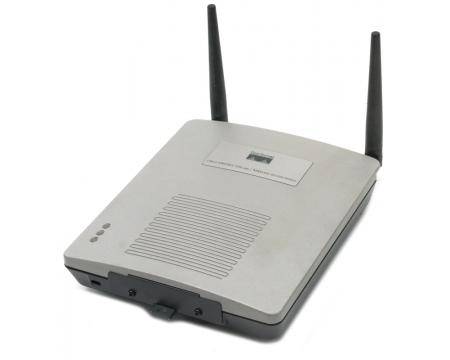




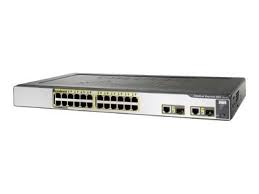

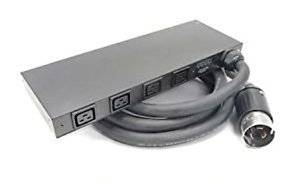
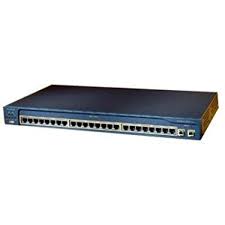

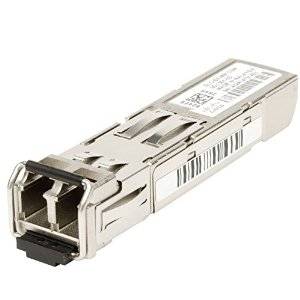
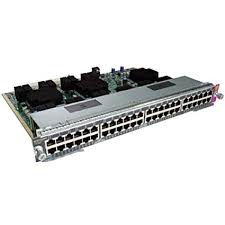
Valoraciones
No hay valoraciones aún.